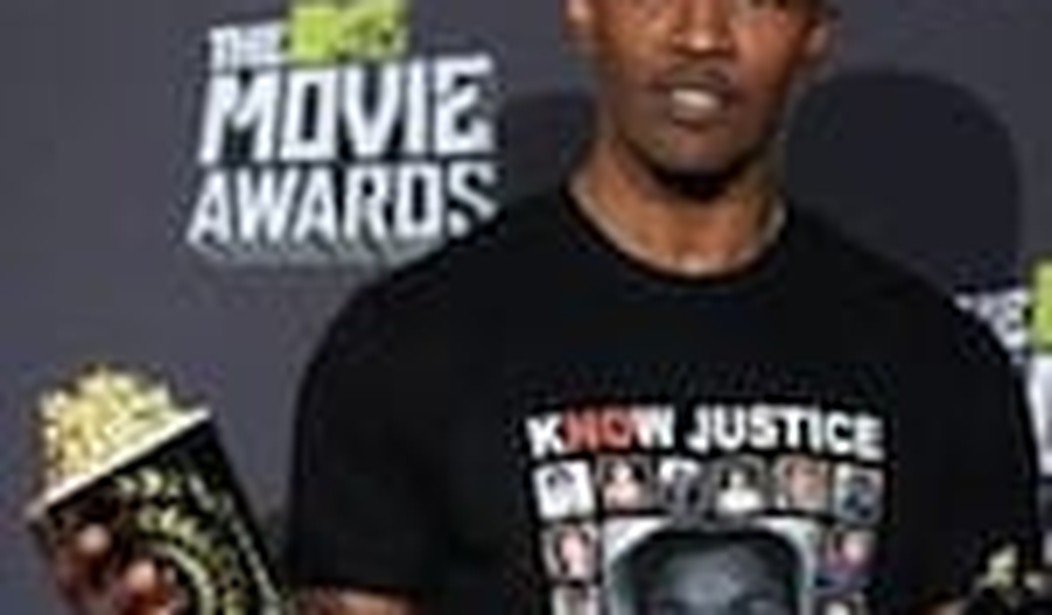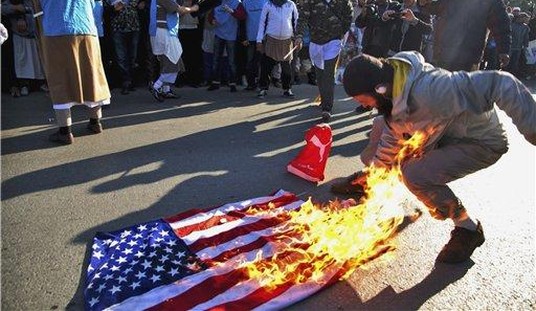The prosecution rested in State of Florida versus George Zimmerman on Friday, July 5. Supporters of the prosecution’s case believe neighborhood watch volunteer George Zimmerman to be a “wannabe” cop who racially profiled Trayvon Martin, stalked him during a cold and rainy February night, started a fight with him, and then murdered him. Yet detractors of the state’s case have much evidence with which to deconstruct those claims following two weeks of the trial.
Claim 1: George Zimmerman profiled Trayvon Martin
Both the prosecution and supporters of their case suggest that George Zimmerman racially profiled Trayvon Martin — that Zimmerman singled out Martin because of his race. There is potentially some merit to this theory, as many of the calls made by George Zimmerman to the Sanford Police Department did indeed end up involving young black males that matched Trayvon Martin’s general description, as noted by one of Zimmerman’s neighbors:
“Let’s talk about the elephant in the room. I’m black, OK?” the woman said, declining to be identified because she anticipated backlash due to her race. She leaned in to look a reporter directly in the eyes. “There were black boys robbing houses in this neighborhood,” she said. “That’s why George was suspicious of Trayvon Martin.”
However, the phone call George Zimmerman placed to the Sanford Police Department’s non-emergency number (NEN) suggests that Zimmerman did not know the race of the person he was calling about as the call was made, and indeed suggests that he was merely calling about suspicious behavior:
We’ve had some break-ins in my neighborhood and there’s a real suspicious guy. It’s Retreat View Circle. The best address I can give you is 111 Retreat View Circle.
This guy looks like he’s up to no good or he’s on drugs or something. It’s raining and he’s just walking around looking about.
This is called behavioral profiling, offender profiling, criminal personality profiling, or other similar terms. This tactic is used extensively by law enforcement to make an educated guess about an individual based upon their behavior.
Only when prompted by the dispatcher did Zimmerman claim of Martin:
He looks black.
Zimmerman later stated that he was only able to confirm Trayvon Martin’s race when Martin approached Zimmerman’s vehicle with his hand in his waistband.
The available evidence suggests that behavioral profiling, not racial profiling, led to Zimmerman calling police.
Claim 2: Language used in the non-emergency number (NEN) call suggests malice aforethought
The prosecution began their opening statement with prosecutor John Guy angrily repeating one phrase from Zimmerman’s NEN call:
F***ing punks, these ass****s always get away.
Brought up later in the trial, the prosecution inflected anger in the statement on multiple occasions. The state claims that the statement showed George Zimmerman was angry and bore “ill will” or “malice aforethought” towards Trayvon Martin. Indeed, the requirement for a second degree murder charge hinges on whether George Zimmerman had this mindset.
Listening to Zimmerman make that statement in the context of his call, in his own voice, reveals that Zimmerman’s inflection suggests a man frustrated by the string of burglaries in his neighborhood. At no point during the duration of the NEN call does Zimmerman’s voice rise to the level of what most would consider anger. The prosecution makes a subjective argument here in asserting this proves “ill will”or “malice aforethought.”
As this is the contention on which a second degree murder conviction hangs, the state has little to no case.
Claim 3: George Zimmerman got out of his truck and followed Trayvon Martin, even though the police told him not to do so
This is a contention made both by the prosecution and the court of public opinion, but this contention is not based on fact or evidence.
George Zimmerman called the police NEN and spoke with dispatcher Sean Noffke. Noffke stated that he did not tell Zimmerman not to follow Martin, as they are trained to not make comments that sound like commands. His exact words:
We don’t need you to do that.
Noffke further stated during his testimony that by asking Zimmerman which way Martin was going, Zimmerman could have reasonably interpreted this as being asked to follow Martin.
Claim 4: George Zimmerman stalked Trayvon Martin with a gun
The word “stalked” is a loaded phrase — and it is also the description of a specific crime, and as such is well-defined.
Nothing George Zimmerman did that night comes close to meeting the legal definition of stalking according to Florida law. Following someone in public at a distance is not a crime.
As for Zimmerman being armed: he regularly carried his Kel-Tec PF9 in an inside-the-waistband (IWB) holster at all times except when he was at work.
There is no evidence suggesting that his gun was anywhere but in his holster up until the moment he drew it and fired one shot.
Claim 5: George Zimmerman’s gun had a round chambered, the gun was cocked, and the safety was off
The prosecution and certain disreputable television personalities assert that the fact Zimmerman carried with a round in the chamber of his firearm suggests that he had ill intentions.
However, all police officers carry with a round in the chamber, as do a super-majority of concealed carry permit holders. Carrying a pistol with a round in the chamber is standardized practice.
As for the absurd suggestion that he carried his Kel-Tec PF-9 cocked and with the safety off — it is physically impossible to carry a PF-9 in such a manner.
The PF-9 is a double-action-only (DAO) design, and the gun only cocks during the pulling of the trigger. Because of the DAO nature of the pistol, it has no external safeties (common in many modern pistols, including those models most often carried by police officers such as Glocks and Smith & Wesson M&P-series pistols).
Of course, there is no means for a non-existent external safety to be “off.”
Claim 6: There was no blood on Trayvon Martin’s hands, suggesting that he did not hit Zimmerman
If you watch George Zimmerman’s recreation of the incident for the Sanford Police Department, especially around the 11:22 mark when he describes Trayvon Martin’s attack on him on the ground, you’ll note that George Zimmerman does not claim that Trayvon Martin was punching him in the face beyond the initial punch. Zimmerman claims that Martin was smashing his head against the concrete, saying: “He grabbed me by my head and tried to slam my head down.”
The interview at the Sanford Police Department the same day only changes the details slightly at the 31:00 minute mark, with Zimmerman saying Trayvon punched him before he tried to sit up, and then Trayvon grabbed his head and began smashing it on the concrete.
While Zimmerman had numerous injuries to the sides, top, and back of his head, a clinically broken nose as testified to by Zimmerman’s primary care provider, two black eyes, and a cut to his chin, Trayvon Martin had just one injury other than the fatal gunshot wound — an abrasion to the outside of his left hand on the knuckle of his pinkie finger.
Such a lack of knuckle injuries would be odd if Trayvon had been throwing regular punches, but is entirely consistent with the use of “hammer fists,” a kind of blow often thrown from the “MMA-style” position that eyewitness John Good noted from just 17 feet away. A hammer fist thrown from a top mount position is similar to the motion of pounding your fist on a table. It can be a very hard strike, but the strike contact point is muscular, instead of skeletal, and so the only place where you would expect an abrasion is where the “meat” of the side of the hand gives way to bone — either at the wrist, or more likely on the outside of the hand where Trayvon sustained his singular injury.
Claim 7: George Zimmerman’s wounds were minor, suggesting that he had no reason to respond with deadly force
Lead defense attorney Mark O’Mara cross-examined George Zimmerman’s primary care provider, physician’s assistant Lindzee Folgate, for more than 20 minutes. She detailed the various injuries Zimmerman sustained during his conflict with Trayvon Martin. However, even with the evidence and testimony regarding his injuries, the fact remains that no one is required to sustain any injury of any kind to reasonably infer that they might be under a deadly force attack.
If George Zimmerman ascertained that Trayvon Martin was smashing his head on a concrete sidewalk, that is assault with a deadly weapon (the wording is different in Florida law; the principle remains the same) and meets the reasonable person standard for lethal force self-defense.
Claim 8: George Zimmerman’s statements to police after the shooting were inconsistent
Sanford police officer Christopher Serino conducted the bulk of the interviews of George Zimmerman and was present for the walk-through. He testified on the stand that the minor inconsistencies in Zimmerman’s testimony did not give him cause for concern, and that they were consistent considering the trauma of the event. Serino said during his cross examination that he thought George Zimmerman was telling the truth.
Claim 9: George Zimmerman’s educational history suggests that he was cognizant of the law and wanted to be an officer (“wannabe” cop/vigilante)
Zimmerman indicated to various people at various times an interest in becoming either a law enforcement officer or even a prosecutor. The prosecution’s assertion that such an interest is grounds for a second degree murder charge is both extremely flimsy and circumstantial.
It is impossible to reasonably argue that the state presented a case that should result in a murder 2 or manslaughter conviction. However, and of course, a conviction is still possible.









Join the conversation as a VIP Member